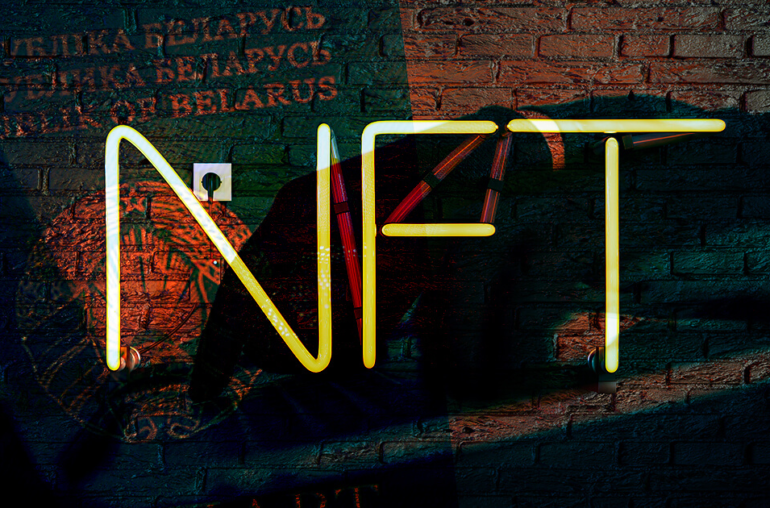Forgot Password?
Once registered, you can:
By registering you agree to our privacy policy, terms & conditions and to receive occasional emails from Ad Age. You may unsubscribe at any time.
Are you a print subscriber? Activate your account.
By Ad Age Staff – 50 min 48 sec ago
By Ad Age and Creativity Staff – 57 min 59 sec ago
By Ad Age Staff – 1 hour 13 min ago
By Steven Millman – 4 hours 19 min ago
By Ally Marotti – 7 hours 31 min ago
By Jack Neff – 1 day 8 hours ago
By Bradley Johnson – 4 days ago
By Jon Springer – 4 days 7 hours ago
By Jon Springer – 1 day 3 hours ago
By Garett Sloane – 1 day 8 hours ago
By Jack Neff – 1 day 8 hours ago
By Ann-Christine Diaz – 1 day 8 hours ago
By Adrianne Pasquarelli – 1 day 3 hours ago
Brands are acknowledging more and more that non-fungible tokens (NFTs) provide innovative ways to engage their loyal fanbase and opportunities for new revenue streams. But there is often the lingering question of how experimenting with new technologies—NFTs, cryptocurrencies, the metaverse and the like—are compatible with sustainability initiatives, given their reputation for contributing to emissions and negatively impacting the environment.
This reputation has caused some backlash from consumers, one example being in the world of K-pop, where some labels faced an outcry after launching NFT products. But are NFTs bad for the environment? Are there clean ways to mint and sell NFTs?
If you’re a brand that aligns with climate consciousness, high energy consumption is not something you can simply ignore. But does that mean you have to skip out on NFTs? The short answer is no, and here’s why.
Proof of work versus proof of stake
Traditional methods of minting and verifying NFTs are indeed energy-intensive. Though it is difficult to estimate exactly, EY reports that the average single NFT transaction produced 48 kilograms of carbon dioxide, or more than 105 pounds, and is the equivalent of burning 18 liters of diesel.
The large majority of today’s NFT transactions live on OpenSea, an Ethereum-based platform. In January, OpenSea had its busiest month ever, with a trading volume of nearly $5 billion. OpenSea relies on a proof-of-work system for validating transactions, a method that is notorious for requiring a lot of computer processing power. An average Ethereum transaction consumes 60% more energy than 100,000 credit card transactions, according to Statista.
This is a bit unfortunate because NFTs are not inherently bad for the environment. Rather, it’s proof of work that’s bad for the environment. OpenSea (and most NFTs) just happened to be built on this platform.
The good news is Ethereum is in the process of transitioning to proof of stake, an alternate mechanism used to verify new cryptocurrency transactions while avoiding the computational cost of proof-of-work methods. And NFTs minted on the public platform Solana’s proof-of-stake blockchain are now available to trade on OpenSea, so brands will have more options to experiment with OpenSea with less environmental impact.
Eco-friendly NFT platforms
By using proof of stake instead of proof of work, the energy consumption of blockchain transactions like buying/selling NFTs is reduced by about 99%. Today, there are a few platforms that use this kind of validation, the major ones being Solana and Algorand.
Solana also uses a new technology called proof of history. According to The Motley Fool, this marks blocks of data with timestamps and, as a result, streamlines the validation process. NFT sales on the Solana blockchain surpassed $1 billion in total volume for the first time in early 2022.
Algorand uses yet another verifying method, pure proof of stake, which essentially means each token holder’s influence depends on a stake in the system, and users are selected randomly irrespective of their stake. This boosts the decentralized nature and security of the blockchain, and it also requires minimal computational power or electricity.
Brands can quickly build and launch their own NFT marketplace on the Algorand blockchain using the open-source project Algomart. Brands like music media company SPIN, the Drone Racing League and Motorsport Games have launched NFT marketplaces with Algomart recently.
Striking the right balance
Experimenting with NFTs is important. It’s certainly not necessary for all brands, but consumers are operating more digitally than ever before, so it’s up to brands to meet them there.
But while it’s natural to want to go where the audience is—and OpenSea is the biggest option available—it will never make sense to go with a proof-of-work blockchain if sustainability is core to your brand’s mission. Brands like GAP, Kia, Honda and even the super-popular NBA TopShot NFT marketplace have made conscious choices to go with proof-of-stake blockchains, and they won’t be the only ones.
It’s also important for brands to consider the potential future impact of experimenting with NFTs. We are still in the early days of NFTs and the metaverse. We’ve seen such a rapid acceleration on this front over the past year that it’s unrealistic to think that the first versions of these technologies will get it totally right. Cars were also extremely bad for the environment at first and have turned out better and better over time. If we don’t start somewhere, we won’t have anything to learn from.
DEPT is a pioneering technology and marketing services company that creates end-to-end digital experiences for brands such as Google, Diageo, Philips, Audi, Twitch, Patagonia, eBay and more. Its team of 3,000-plus digital specialists across 30-plus locations on five continents delivers pioneering work on a global scale with a boutique culture. The company is committed to making a positive impact on the planet, and since 2021 has been climate-neutral and B Corporation certified.
In this article:
Max is a creative director at DEPT, a global digital agency. He’s a true futurist known for sharing his disruptive view on new technology.



